Bringing home a puppy or new dog can be such an exciting time for your family. After getting over the excitement, you face the challenge of growing your pup to be a good dog.
Training your dogs to behave properly is one of the biggest priorities in the first few weeks. Using positive reinforcement is an effective approach to training your dogs.
Are you ready to dive into a journey of getting a well-behaved furry companion? Positive reinforcement is the key to getting your dog trained properly in the most humane manner.
In this blog post, let’s explore the advantages of using rewards, treats, and praise to enhance your dog’s confidence and enhance his training behavior positively. Let’s explore the benefits of positive reinforcement training methods in growing well-behaved dogs.
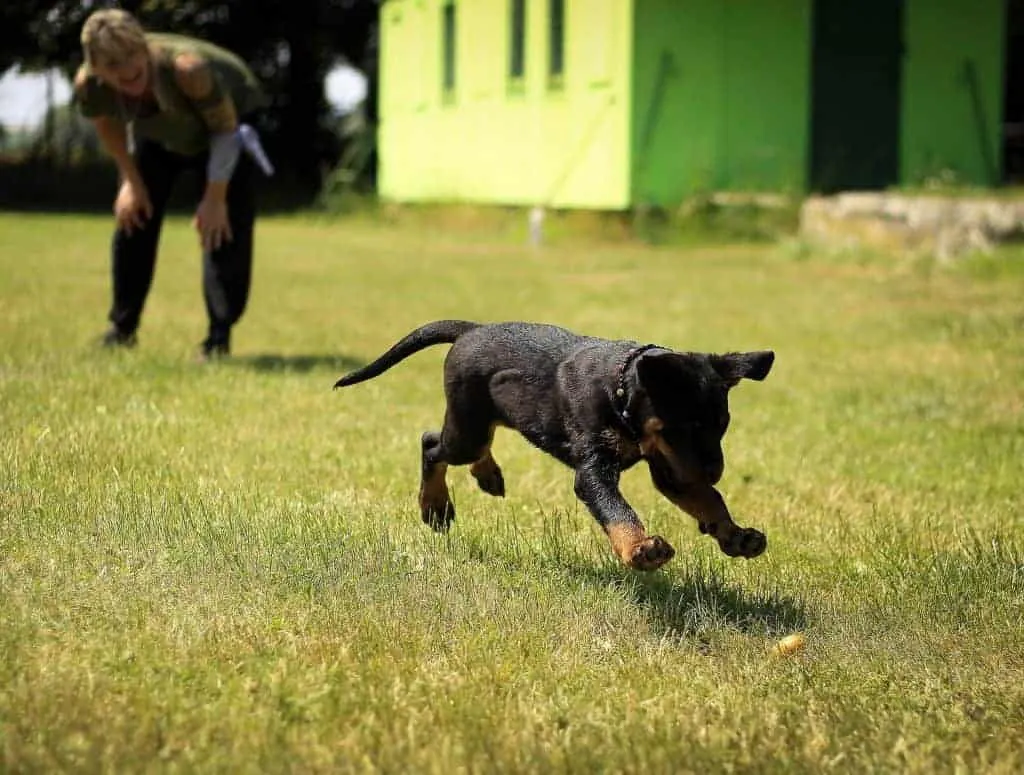
What is Positive Reinforcement?
Positive reinforcement is a form of operant conditioning where desired behaviors are rewarded to encourage the repetition of such behaviors.
This type of reinforcement is often done with humans and has been effective in rearing children to develop positive behaviors.
Positive Reinforcement in Dog Training
The great thing is positive reinforcement works well with our furry friends too. By using reinforcements, you reward your dogs with a reinforcing stimulus like a treat, praise, or fun things such as playtime or walks.
In dog training, positive reinforcement means rewarding a dog when he exhibits certain behaviors that the dog owner or pet trainer wants him to show.
Dogs earn rewards (positive stimulus) when they exhibit good behavior (positive reaction) and avoid bad behavior. Good behavior is positively reinforced with rewards like treats, toys, or praise.
When your dog exhibits unwanted behaviors, on the other hand, you can implement a conditioning called negative punishment.
In this technique, your dog gets nothing when they perform an undesired behavior. Dog owners may opt to remove something that the dog likes to sort of punish him for the undesirable behavior.
Pet parents and professional dog trainers use positive reinforcement as an effective method of teaching your dog that a positive stimulus is introduced after the showing of good behavior. It can help in altering a dog’s behavior positively.
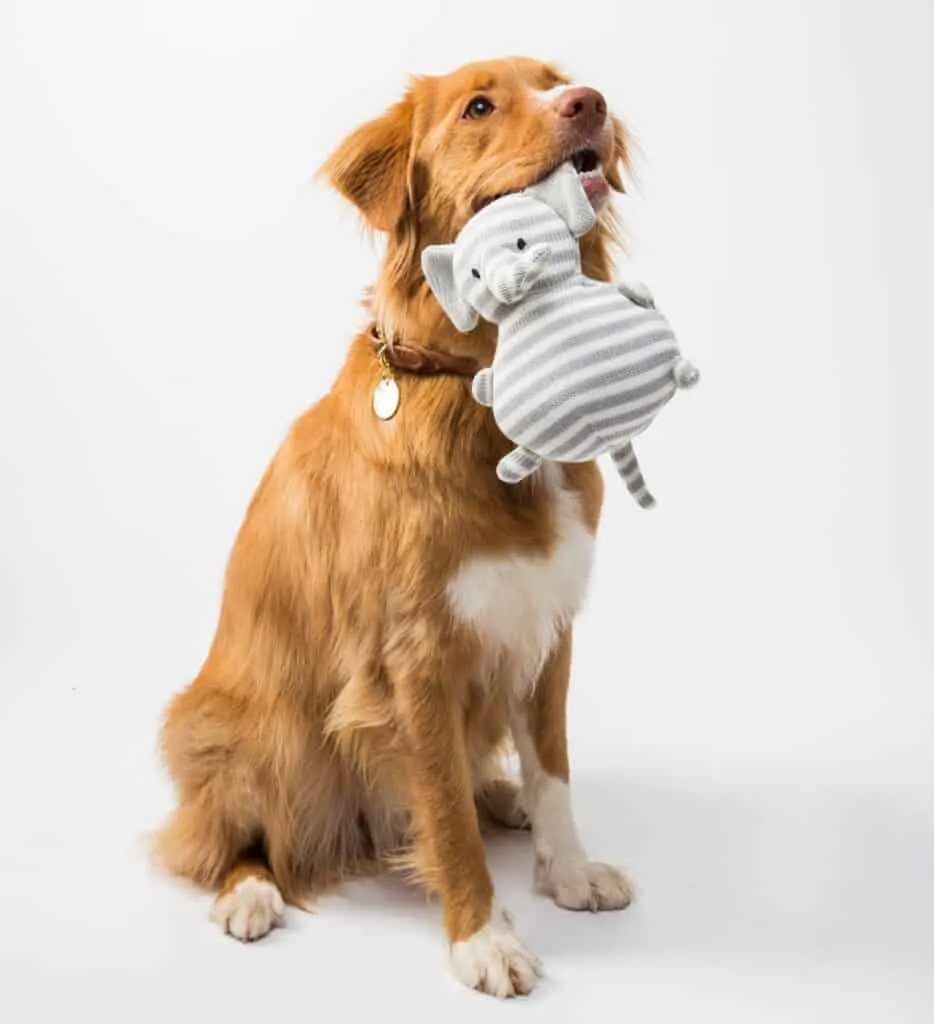
Examples of Positive Reinforcements
Some examples of positive reinforcements for your pups include verbal praises, cheering them up while they work on learning new behaviors, giving them a treat, and allowing them to play with their toys every time they use the grass instead of your carpet during housebreaking.
These rewards work as reinforcers as they encourage your pups to learn and perform the desired behavior. These reinforcers increase the probability that your pups would resort to acting the same way next time because of these reinforcers.
Another example is letting him hear verbal praise every time he learns and practices the desired behavior.
Positive reinforcement sends a clear message to your dog’s brain about the desired behavior.
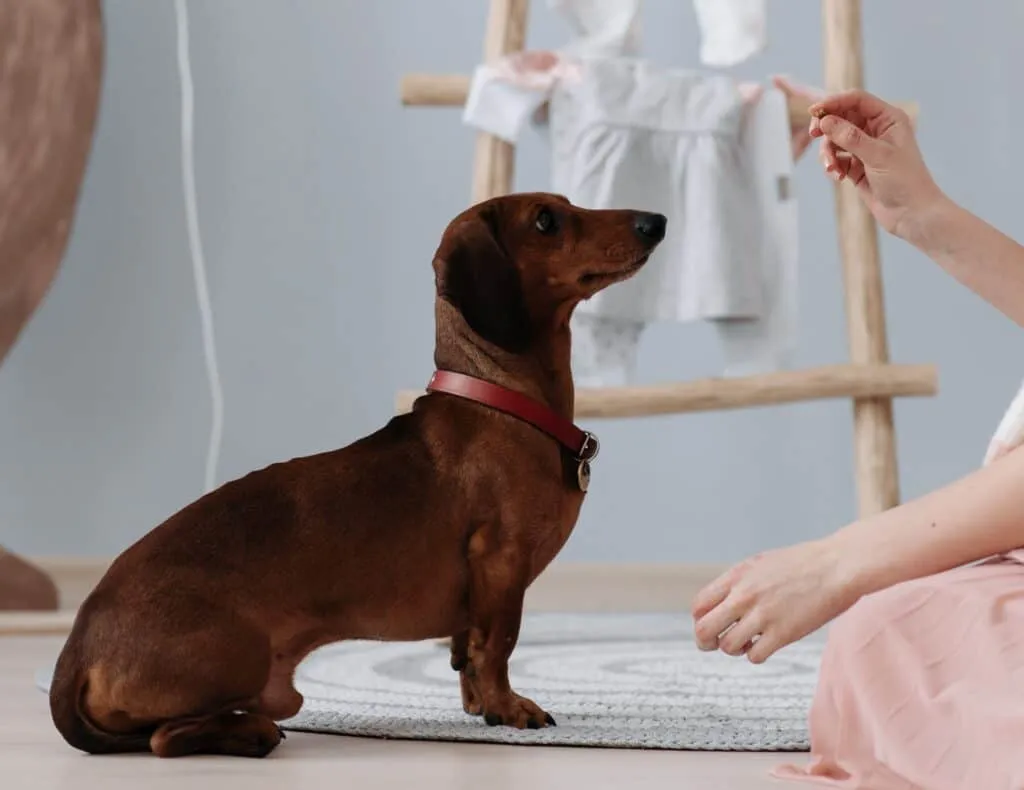
When to Apply Positive Reinforcement Training
Potty training and leash training are two of the best places to start using positive reinforcement. The reinforcing stimulus helps your pup to learn where to go potty and how to walk politely on a leash.
You may also want to train your pup to do tricks. This is a great bonding opportunity with your new pup and helps them practice obedient behavior.
How is Positive Reinforcement Used?
Positive reinforcement may feel like a big task. However, there are a few basic steps to help you begin encouraging new behaviors in your pup. Prepare your reinforcement schedules by setting aside an amount of time each day to practice this type of reinforcement with your dogs.
Use Short Verbal Cues
First, choose short, simple commands you want to teach your pup. You want to start with commands such as “sit” and “shake.”
Eventually, you would want to move on practicing the many different commands, like “no,” “down,” and “off,” as well as other tricks. These simple verbal commands are easier for your dog to understand.
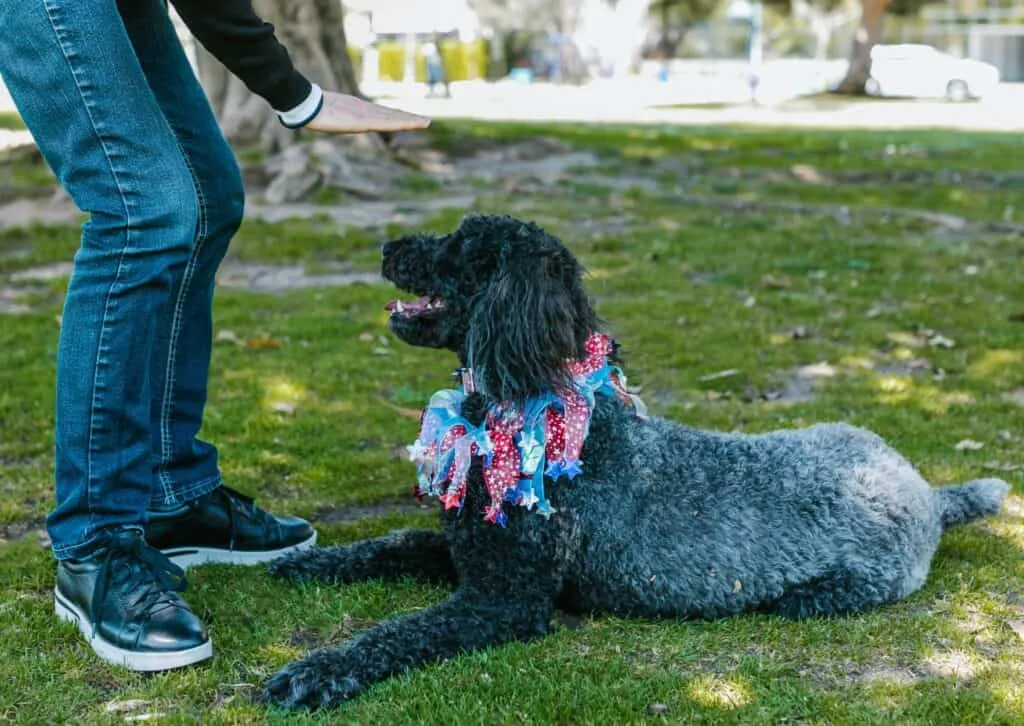
Give the Reward Immediately
During the learning process, it is a good idea to keep treats nearby at all times. Even when you are not in an active training session, you would likely want to reward good behavior from your dogs.
Using treats that your pup loves is key to this type of reinforcement. You want to always attach verbal praise to the delicious treat. Every time your pup consistently issues the desired response to your commands, begin rewarding such behavior with treats.
Once your pup demonstrates a specific behavior, this is where positive reinforcement occurs. Immediately reward them with a treat and verbal praise. This should be done for any favorable response or positive behavior. Always remember that it is important that reinforcement occurs with just a short amount of time passing after the performance of the desired behaviors.
If you are housebreaking and your dogs relieve themselves outside, this behavior must be reinforced. This could be done by praising them, telling them they did a good job, and giving them a treat.
This learning will develop within them the reinforced behaviors. Eventually, it will help them learn to do the right thing every time.
Keep Training Sessions Short
It is important to keep these work sessions short and fun to be effective. Positive reinforcement works by stimulating your pup to look forward to spending time with you and following your commands.
However, other dogs have inherently short attention spans. When you feel that they are losing attention, rest for a while and give your dog a break.
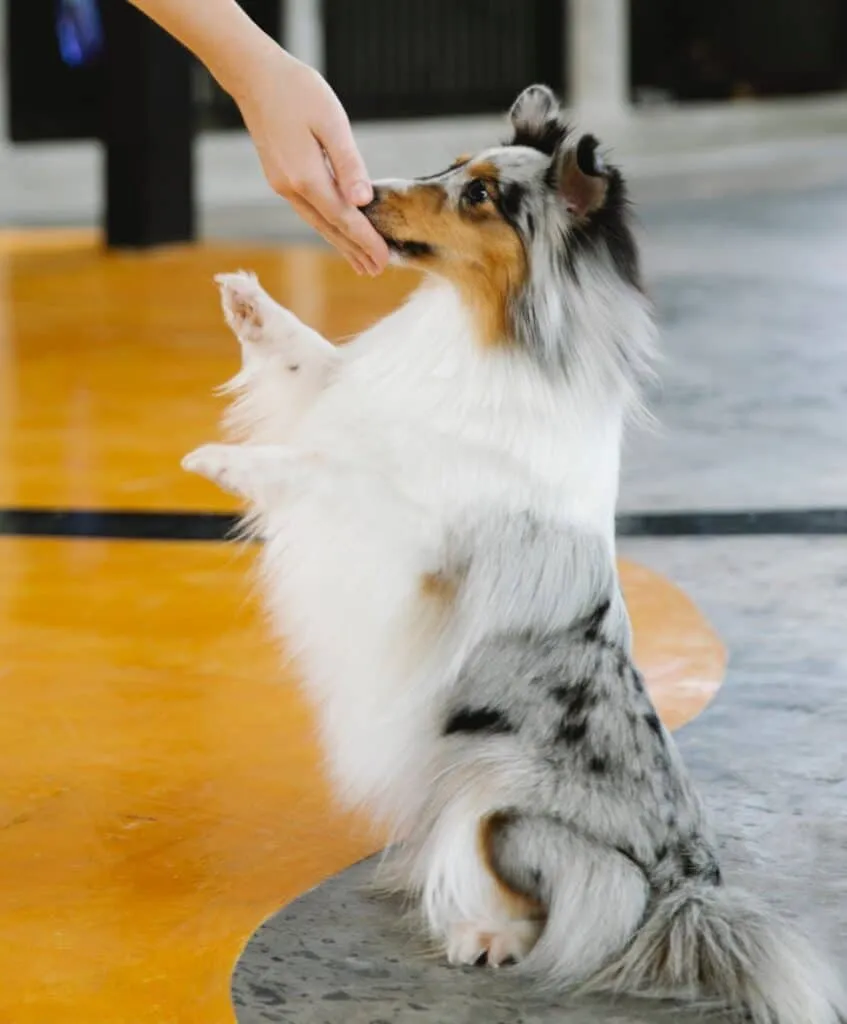
Be Consistent and Patience
One key to positive reinforcement is staying consistent. Consistency would teach your dog that the same behavior gets the same reward.
Also, patience is another key to successful training. Be patient with teaching your dog new skills or behaviors. While some dogs easily adjust and learn, others may not be too receptive to any teaching.
Train your dog consistently and with patience, and you will get a well-behaved dog in no time.
Avoid Punishment
In positive reinforcement training, rewarding your dog is essential. However, it is also important to avoid punishment in any dog training.
While other operant conditioning allows for the use of punishment, it has no room for training your dogs, even if your pups perform a negative behavior.
Punishment and harsh training techniques may only foster negative behaviors in your dogs. Hence, it should be totally avoided.
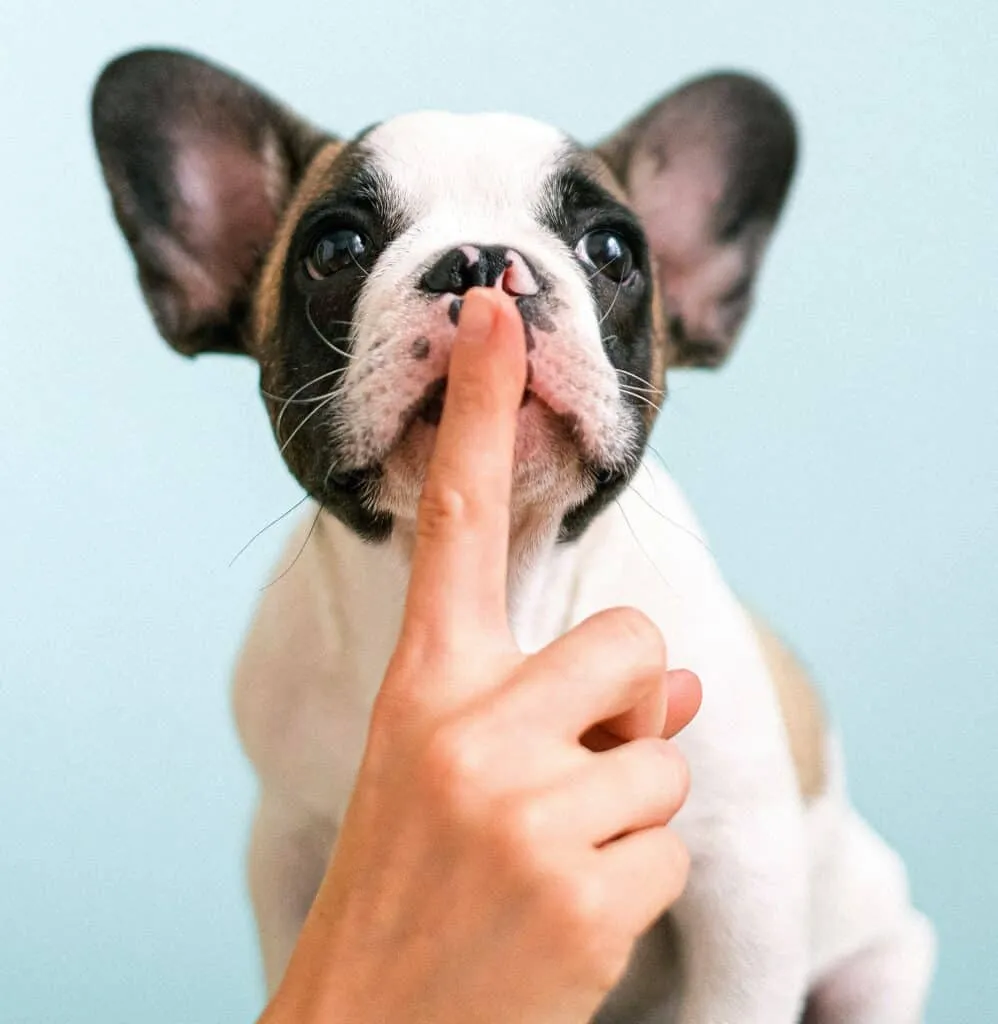
Benefits of Positive Reinforcement Dog Training
There are many benefits when you use positive reinforcement.
Creates Better Bond
One of the biggest reasons positive reinforcement is good for you and your furry one is it helps strengthen your bond. Using this approach helps your dogs learn that you are trustworthy. It also means your pup will look forward to spending more time with you without fear of reprimand.
By using positive reinforcement, you establish yourself as a loving and reliable source of good things in your dog’s life. This strengthens the emotional connection between you and your furry friend.
Even your entire family can benefit from this training method. If you have children in the household, they will love being able to give the pup treats when they see good behavior during training sessions.
Gets Dog to be More Attentive
Most dogs easily lose attention during training, especially long training sessions. Positive reinforcement training, however, keeps the dog more attentive as they look forward to a food reward or getting their favorite toy.
Rewarding your dogs as they respond to stimuli is the whole idea behind positive reinforcement techniques.
Boosts Dog Confidence
Positive reinforcement builds your dog’s confidence by encouraging them to make their own choices and learn at their own pace. Trust blossoms when your dog realizes that good behavior leads to positive outcomes.
If your dog knows that behaving properly gains them a treat or praise, it is likely your pup will work hard to get that positivity from you.
Whether you are at home or away, your dog will trust that the same behavior will get him a treat or two. This trust will help your dog grow into a better canine companion.
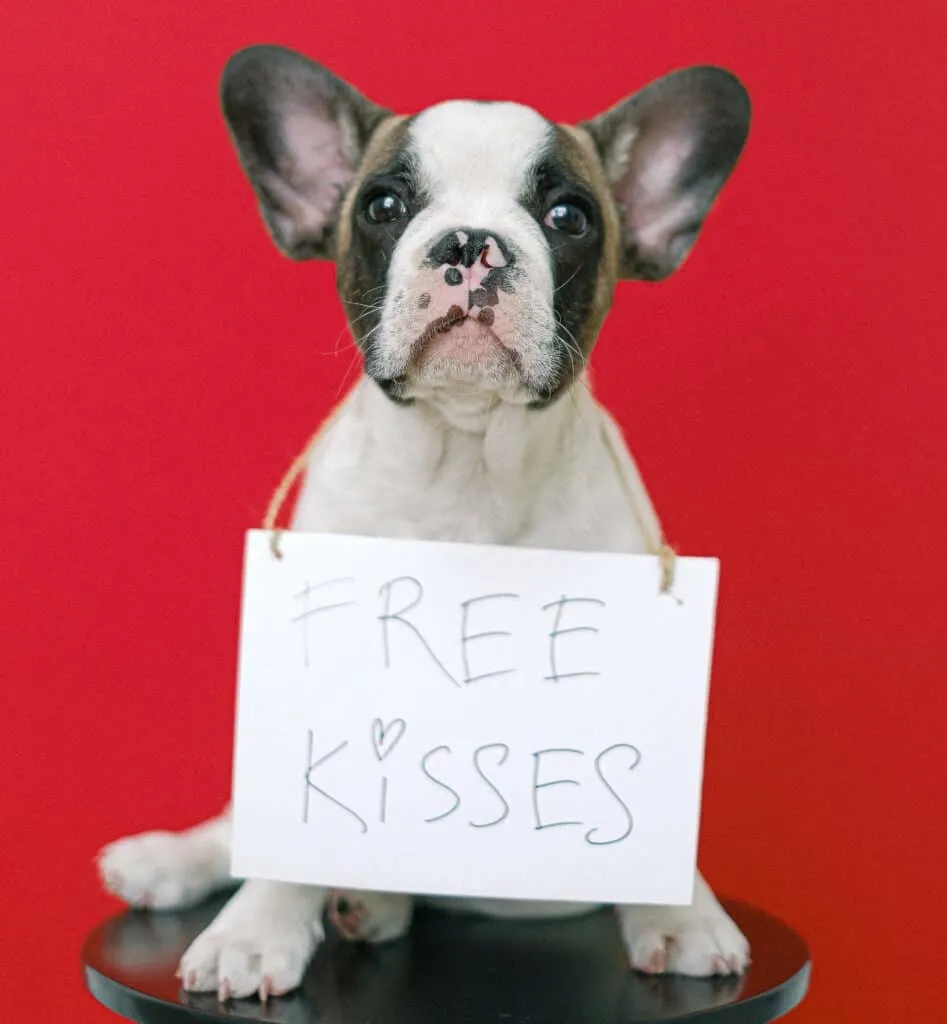
Other Resources and Training Aids
There are many other resources and training aids that can help in dog training. Both physical and online stores do not go out of these resources.
Books
There are a variety of books to help explain and advise you in training your pup using positive reinforcement. Here are a few books that may help you in this training process.
Training the Best Dog Ever is written by Dawn Sylvia-Stasiewicz, who trained Obama’s White House dog, Bo. This book outlines a system of positive reinforcement that will help train your pup in 5 weeks.
If you are looking for a general read about positive reinforcement in all areas of your dog’s life, you may want to check out The Power of Positive Dog Training . This book gives an in-depth look at the positive tools that work in training your pup for a lifetime of happiness with your furry companion.
The Perfect Companion will help you better understand how your dog’s mind works.
Clickers
Dog clickers are used as a way of positively reinforcing good behavior. This small handheld device makes a clicking noise when you push a button. This click should be followed by a treat and positive praise like saying “Good job!” which then works as a reward.
In clicker training, your dogs will associate that noise with something positive. Therefore, they will display positive behavior even if no reward follows when they hear the clicking noise.
Training Treats and Toys
Local pet stores and online vendors sell dog treats of all shapes, sizes, and flavors. When you first start working with your pups, it may be a good idea to choose small or soft training treats such as this Blue Buffalo Soft-Moist Training Treats .
You may also choose to reward your pup after an effective learning session with a KONG - Classic Dog Toy filled with peanut butter or edible filling.
Providing your furry friend with several choices of balls and toys will help their mind to stay active, helping keep them out of trouble as well.
Keeping your dogs mentally and physically stimulated throughout the way is an effective strategy in this type of method.
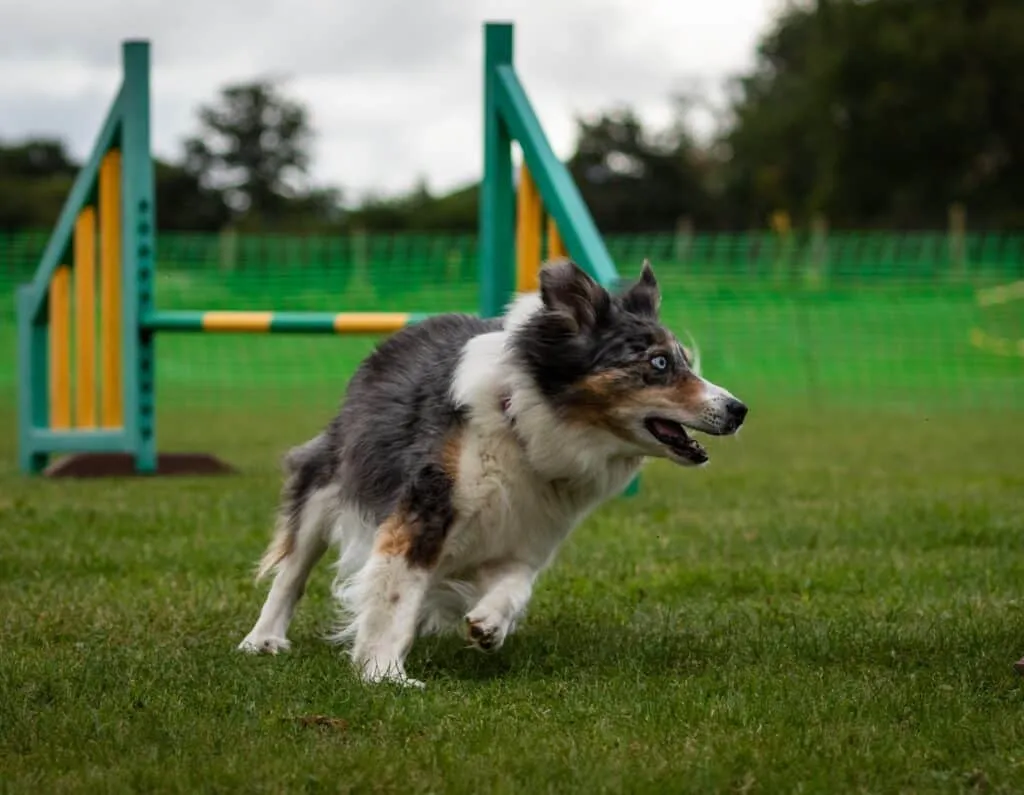
Summary
As with other dog training approaches, be patient and consistent.
If your dogs are not responding to your training techniques, or you feel like you need more guidance, you may want to consider finding a dog trainer. Doing a Google search for “positive reinforcement dog trainers” in your area should bring up some options for you to choose from.
These trainers have many different approaches and techniques. Make sure you are searching for trainers that will reinforce good behaviors with positive responses. Many trainers also offer group classes. These classes are a great way for you to continue to work on bonding with your dogs through the process.
Rewarding your dogs for good behavior is an important part of being a pet owner. Using reinforcement will help your pet learn what you expect while still building a trusting relationship.
Positive reinforcement will mean a lot of yummy treats and “good dogs” and will be worth the effort!